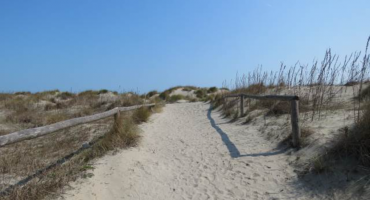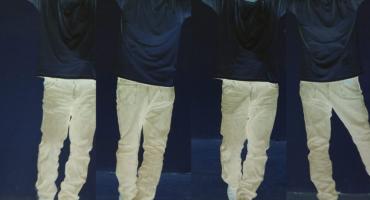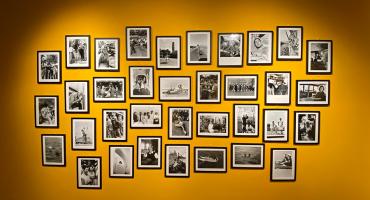Yun Hyong-keun (Cheongju 1928 – Seoul 2007) was one of the most important post-World War II Korean artists. His life was marked by his country’s troubled history: he was repeatedly imprisoned for his freedom of expression, and in 1950 he miraculously escaped a group execution by firing squad. Out of forty companions only he and four others survived.
After an initial phase of experimentation, his artistic style developed and became defined in the first half of the 1970s. It reflects the harshness he suffered, and is centred on a few essential elements. The very dark shade of pigment he used, a combination of ultramarine blue and burnt umber, was spread with a large brush in highly diluted successive layers that gradually impregnated the raw canvas. The ultramarine blue and burnt umber symbolise the sky and the earth, while the application of the paint parallels the phenomenon of water, which generates life by soaking into the porosity of the ground.
Yun’s large, essential expanses of colour allude to the architectural structure of large portals. In January 1977 Yun wrote in his diary: “The premise of my painting is the door of heaven and earth. Blue is the colour of the sky; brown is the colour of the earth. So I call them ‘heaven and earth’; the portal gives structure to the composition”.
Although Yun’s painting remained true to itself and its essential stylistic features, it underwent a temporal development, characterised by the oblique lines of heightened drama in the canvases painted in the aftermath of the Gwanju massacre (May 1980), to the defined, more spacious, rectangular expanses of colour from the 1990s onwards.
“I don’t recall when I first began to like the colour of earth. The same applies to the colour of trees and the colour of rocks. I love the colours of the natural landscape, and also the colour of nature in winter. […] True beauty comes from taking eternal textures and colours directly from nature. That’s what I try to express in my paintings. I don’t like to apply any primer to the canvas, also to avoid covering the texture of the natural fibres”.
This first European retrospective dedicated to Yun Hyong-keun has been organised in collaboration with the National Museum of Modern and Contemporary Art (MMCA) in Seoul and is curated by Kim Inhye, a leading expert on the work of the Korean master.
The decision to present Yun Hyong-keun’s work in Venice is also based on the conviction that his art is in particular harmony with this city of land and water.
Where: Palazzo Fortuny San Marco 3958, 30124 Venezia
Opening times:
10 – 18
Ticket office: 10 – 17
Closed on Tuesday
Price:
Full: 12 euro
Reduced: 10 euro
Some texts and images are sometimes found on the web, citing if possible their source and author and are disclosed for information purposes only, in accordance with paragraph 1-bis of Article 70 of Law n. 633 of April 22, 1941, "Protection of copyright and other rights related to its exercise".
The material taken from the web was in good faith considered public domain. If their publication infringes any copyright, please inform us to remove or modify them.
The authors of the blog are not responsible for the linked sites or their content, which may be subject to changes over time.
The remaining material is property of the authors of the site, which is subject to copyright. No reproduction, not even partial (in print or digital), is permitted without the express permission of the authors.
The texts on the site are freely usable for cultural and not profit purposes, provided that they clearly state the source of origin, any authors of the text, when indicated, the dates of editing and updating and the relative url.



